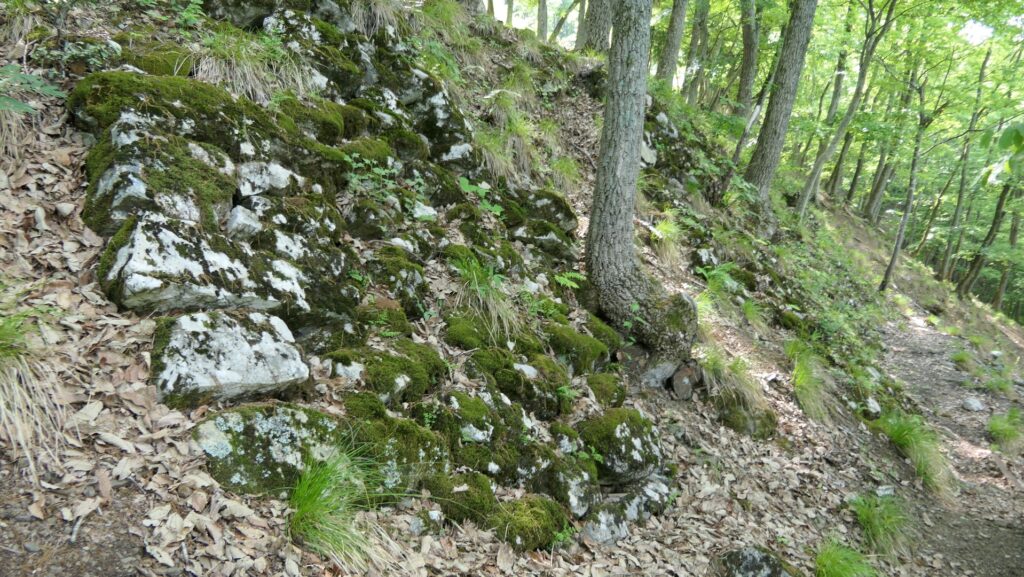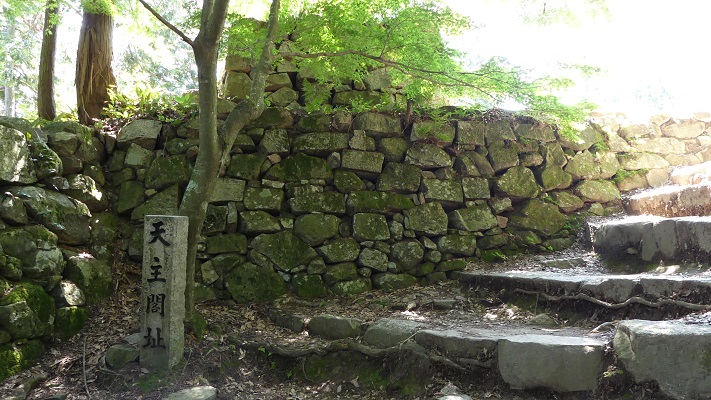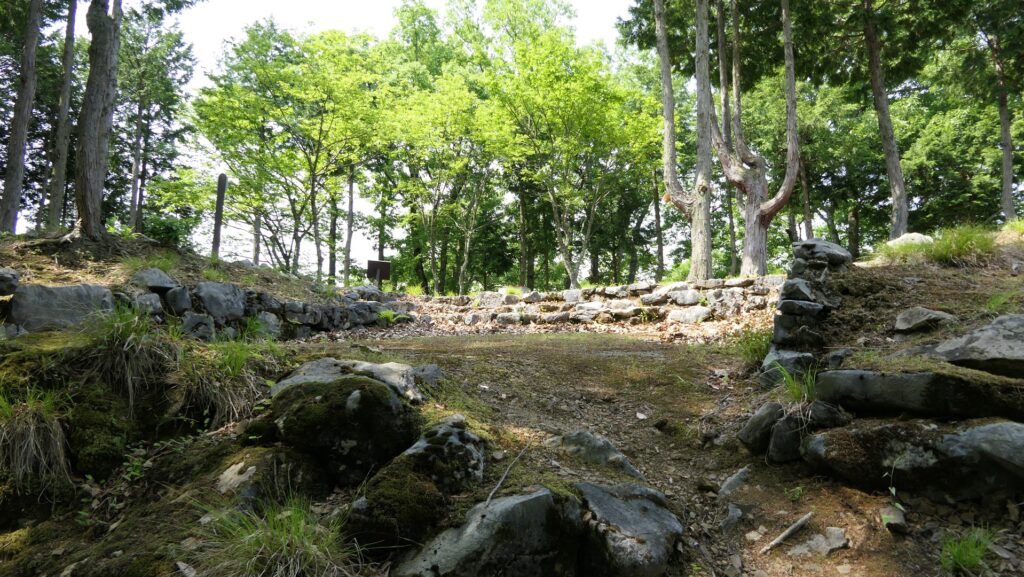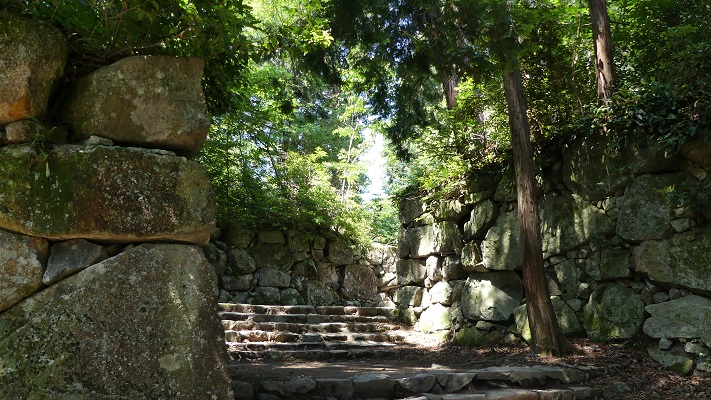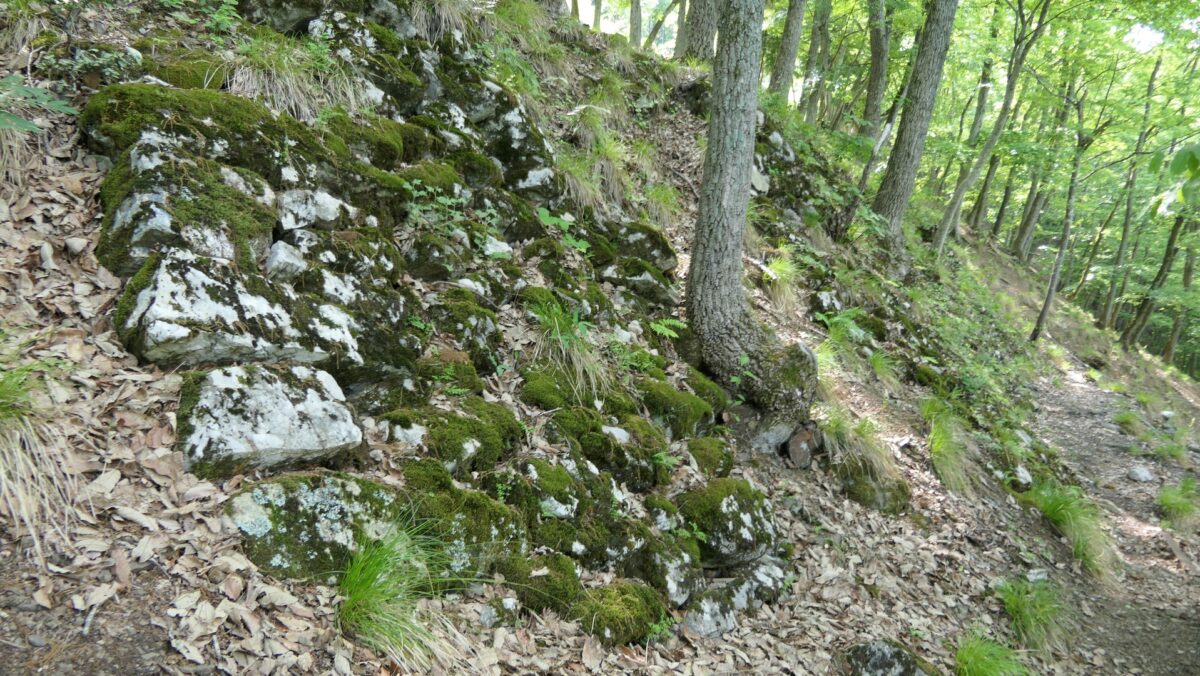Location and History
Border Castle between Northern and Southern Omi Province
Kamaha Castle was a mountain castle during the Sengoku Period, which was located in Omi Provence (currently the modern day location of Shiga Prefecture). Its position was in the central area of the province, which at the time was divided into two parts, the northern part and the southern part. As a result, the two warlords from the Rokkaku Clan in the south and the warlord from the Azai Clan in the north were constantly gaining and loosing castles each other. Kamaha Castle was built on one of the ridges, which was 384 meters high, of Mt. Ryozen,. The name “Kamaha” which means “Sickle Blade” got its name from the shape of the ridge with its steep sides. The castle was located near a major road called “Nakasendo”, which was conveniently located for battle making it easier for transportation as well.
The range of Omi Province and the location of the castle 城周辺の起伏地図In the middle of the 16th Century, during the Sengoku Period, the Hori Clan was the ruler of the castle. The clan frequently changed their masters depending on the situation. In one instance, back in 1553, the Rokkaku Clan attacked Kamaha Castle, forcing the Hori Clan to escape, eventually surrendering the castle completely. However, the Hori Clan would eventually form an allegiance with the Azai Clan, most likely because the Azai Clan was gaining a lot of power at that time. Back in 1570, The Azai Clan fought Nobunaga Oda, where Hidemura Hori sided with Nobunaga who was easily persuaded by Hideyoshi Hashiba, the eventual ruler of Japan. This was the destiny of lord of the border castle.


Harsh Fate of Hidemura Hiri, Lord of Castle
Since Hidemura formed an allegiance with Hideyoshi, the Azai Clan were eventually beaten. Furthermore, Hideyoshi assisted Hidemura defend Kamaha Castle from an Azai Clan attack in 1571. This resulted in Nobunaga, Hidemura and Hideyoshi capturing Odani Castle (the home base of the Azai Clan) in 1573. A year later (in 1574) shortly after the succession, Hidemura was fired by Nobunaga due to Hidemura’s senior vassal’s failures. The primary reason for this is still unknown, but perhaps we can assume that this was purely the cruelty of Nobunaga’s character. Some historians speculate that there was a power imbalance since Hidemura was getting more powerful through his allegiance with Nobunaga. It was well-known that Hidemura accumulated more territory than Hideyoshi, who at the time was Nobunaga’s important retainer. Nobunaga might have the rebellion by Hidemura, or perhaps he wanted to take the territory for him. As the famous Chinese proverb goes “When the nimble rabbit dies, the hunting dog will be cooked”, so too was the fate of Hidemura. Finally, there is a strong belief by historians that Hidemura was hired by Hideyoshi and his brother Hidenaga in the end.
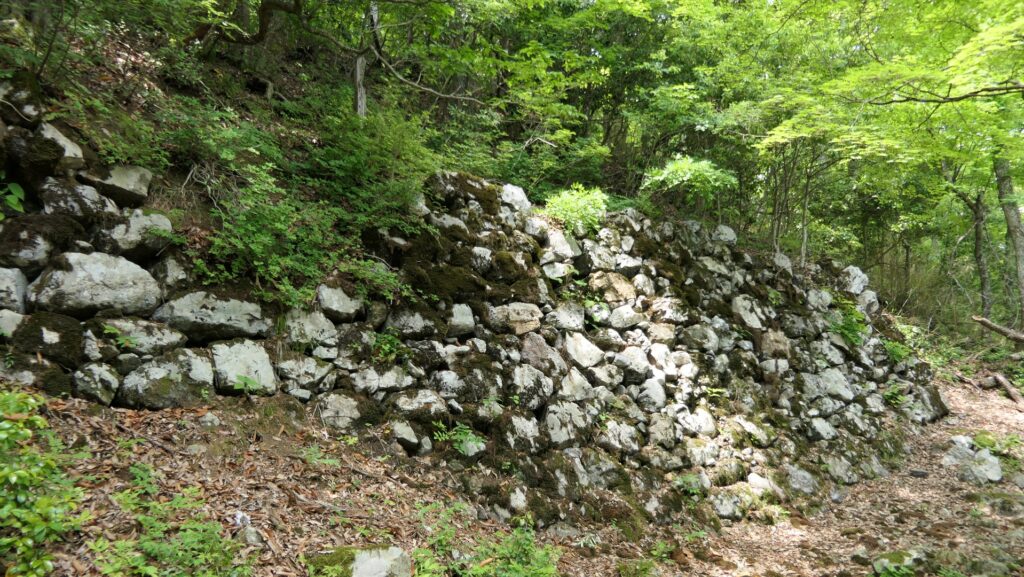

Systems of Castle improved uniquely
Kamaha Castle was finally abandoned in 1575. Some historians assumed that because the castle was made of soil, and that it was inferior to other castles, that it was abandoned sooner than other castles. However, according to a more recent excavation, it was revealed that Kamaha Castle actually had an advance system compared to other mountain castles. Kamaha Castle had at least a 3-level large turret, like a Main Tower, in the northern enclosures of the castle. This turret was thought to be used by defenders who shot arrows against attackers, as well as a large ditch located in front of it. If attackers had the misfortune of getting stuck in the ditch, it would give a clear and perfect sight for the defenders. Many enclosures were surrounded by stone walls. Moreover, the main enclosure at the center of the castle had its entrance with a square space surrounded by stone walls and steps called “Koguchi”. These types of systems were seldom seen in castles that were built after Azuchi Castle which Nobunaba built back in 1579. Based on these findings, Kamaha Castle was truly more advance than Azuchi Castle.
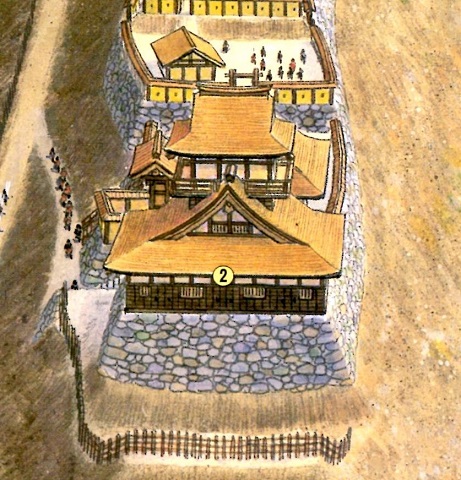

On the other hand, there were some differences between Kamaha Castle and Azuchi Castle as well. The large turret in Kamaha Castle was placed on earthen walls, and not on stone walls. These stone walls supported the earthen walls which prevented them from collapsing. In the case of Azuchi Castle, its main tower was built on stone walls directly. The Koguchi entrance of Kamaha Castle was designed for the gate of the main hall, and not for defense. Koguchi entrances built after Azuchi Castle exhibited more defensive capabilities, combined with complex routes. Historian often speculate that the systems used in Kamaha Castle had been improved uniquely, but was eventually replaced with other systems which were first seen in Azuchi Castle. However, the design of Kamaha Castle ‘s large turret might have been used for the main towers of other castles. This is because Hideoyoshi who would eventually build Osaka Castle included its main tower, must have seen the large turret when he worked with Hidemura at Kamaha Castle.
